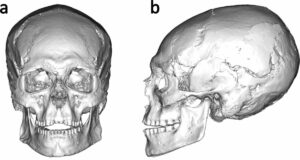“Unveiled Secrets of the Cosmos: A Free-Floating Planet’s Surprising Journey Through the Void!”
When we gaze up at the cosmos, it’s easy to envision planets twirling around glimmering stars, each one playing its part in the grand ballet of the universe. But hold on a second—what if I told you there are loners out there, mysterious entities just floating in the vastness of space with no star to call home? Enter the James Webb Space Telescope (JWST), a $10 billion marvel that’s not just replicating the classic celestial motions we know and love—it’s shaking things up with its latest revelation. Say hello to SIMP 0136, a rogue object just hanging out in our galactic neighborhood, roughly 20 light-years from Earth, and reminiscent of those odd relatives we sometimes wish would just get in line with the rest of us. Launched in 2021, the JWST has taken cosmic photography to a whole new level, capturing sights previously cloaked in the shadows of the unknown. Curious about what makes this free-floating giant tick? Buckle up, because this adventure into exo-meteorology promises to be thrilling! LEARN MORE.
When we think of the universe, we think of planets rotating around stars as they move in groups across the cosmic void.
Enter the $10 billion James Webb Space Telescope (JWST), which is mixing things up a little with one of its latest discoveries.
See, some things in the universe exist in their own right. No star to revolve around, no other planets to form a solar system like the one Earth calls home.
Say hello to SIMP 0136, located by the JWST this month as it focused its cameras in to deep space.
First launched in to space back in 2021 by NASA, the telescope is the natural heir to the Hubble Space Telescope. Using its high resolution infrared camera it is showing humanity things it has never seen before.

CGI of the JWST floating through space (Getty Stock Images)
In fact, Brian Cox spoke about how amazing a piece of technology it is, effectively helping us travel through time.
Anyway, back to the discovery. Spotted floating aimlessly through space, SIMP 0136 is roughly 20 light years away from Earth.
In universe terms, that is pretty close.
“SIMP 0136 is a rapidly rotating, free-floating object roughly 13 times the mass of Jupiter, located in the Milky Way just 20 light-years from Earth,” NASA said.
“Although it is not classified as a gas giant exoplanet — it doesn’t orbit a star and may instead be a brown dwarf — SIMP 0136 is an ideal target for exo-meteorology: It is the brightest object of its kind in the northern sky.

NASA building the JWST before launch (Alex Wong/Getty Images)
“Because it is isolated, it can be observed with no fear of light contamination or variability caused by a host star. And its short rotation period of just 2.4 hours makes it possible to survey very efficiently.”
It’s about 13 times the mass of Earth which makes it a huge planet. What it is like close up, we don’t know just yet.
Allison McCarthy, doctoral student at Boston University and lead author on a study published in The Astrophysical Journal Letters, said: “We already knew that it varies in brightness, and we were confident that there are patchy cloud layers that rotate in and out of view and evolve over time.
“We also thought there could be temperature variations, chemical reactions, and possibly some effects of auroral activity affecting the brightness, but we weren’t sure.”

We can effectively see back in time due to how light works when the JWST takes photos (Getty Stock Images)
Capturing images of the planet, the JWST took thousands of photos. We’re talking one every 1.8 seconds for more than three hours; the time period it takes to observe one full rotation of the planet.
From the images, NASA determined it is the brightest shining free-floating planet in the northern sky – but that its brightness changes as it rotates.
Why? Scientists think it is due to the unevenness of the state of each cloud layer and how light reacts to that.
They doesn’t explain all the changes, though, with studies set to continue on the matter.














